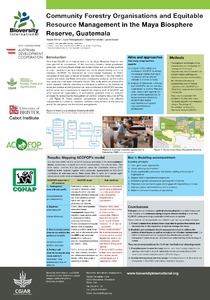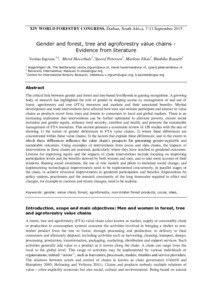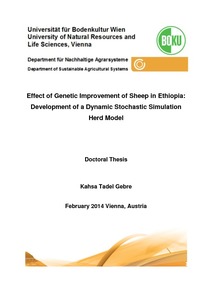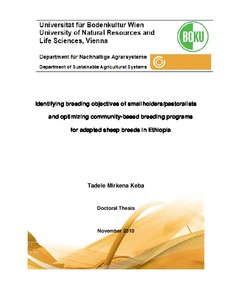Location
The University of Natural Resources and Life Sciences, Vienna, or simply BOKU (derived from its German name, Universität für Bodenkultur Wien), founded by the Austrian Empire in 1872, is an education and research centre for renewable resources in Vienna. BOKU combines fundamental and applied expertise in the fields of natural sciences, engineering and biotechnology as well as social and economic sciences to enhance the knowledge basis for sustainable management of natural resources. It is a member of the Euroleague for Life Sciences (ELLS) university network. There are currently around 13,000 students from over 100 countries enrolled at BOKU.
Source: Wikipedia (d.d. November 10th 2017)
Members:
Resources
Displaying 6 - 10 of 10Community forestry organizations and equitable resource management in the Mayo Biosphere Reserve, Guatamala
Spatial Variability of Selected Soil Attributes under Agricultural Land Use System in a Mountainous Watershed, Ethiopia.
In the Ethiopian Highlands, research projects were often measuring soil attributes of spatially structured point data but soil variability at a watershed scale is not clearly defined. This study was conducted to assess the correlation among selected soil attributes and to illustrate the spatial pattern and dependence of neighboring observations. The 53.7 km2 study watershed was divided into a 500 m by 500 m square grid using arcgis and at the center of each grid soil samples from 0 to 25 cm depth were collected within 184 locations.
Gender and forest, tree and agroforestry value chains - evidence from literature
The critical link between gender and forest and tree-based livelihoods is gaining recognition. A growing
Effect of genetic improvement of sheep in Ethiopia: Development of a dynamic stochastic simulation herd model
A community-based sheep breeding program has been implemented in the highlands of Ethiopia to improve the body weight and reproductive performance of Menz sheep. This study adopts system dynamic methodology to develop a dynamic stochastic simulation herd model to evaluate the effect of genetic improvement and additional feed sources (forage production) on herd dynamics and profitability. The study also explores the opportunities of system dynamics approach in the context of designing breeding programs to predict annual genetic gain of traits.
Identifying breeding objectives of smallholders/pastoralists and optimizing community-based breeding programs for adapted sheep breeds in Ethiopia
The aim of this thesis was to identify breeding objectives of smallholder and pastoral sheep keepers in Ethiopia (Afar, Bonga, Horro and Menz areas) and to design appropriate community-based breeding plans for genetic improvement of four indigenous sheep breeds. Information on genetics of adaptation in farm animals was reviewed. Two live animals ranking experiments approaches, own-flock and groupanimal ranking, were used to identify sheep breeding objectives. In own-flock ranking, owners paid more attention to production and reproduction performances and behavioral traits (e.g.






